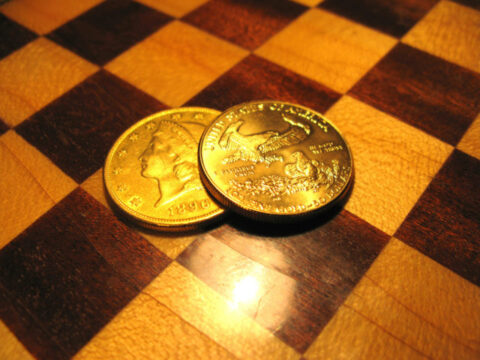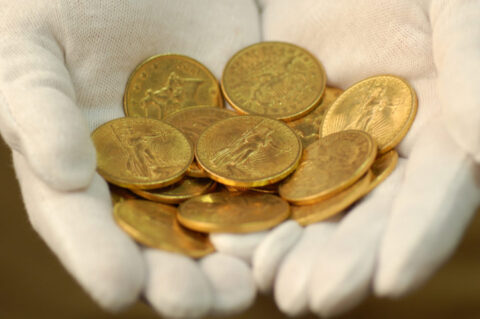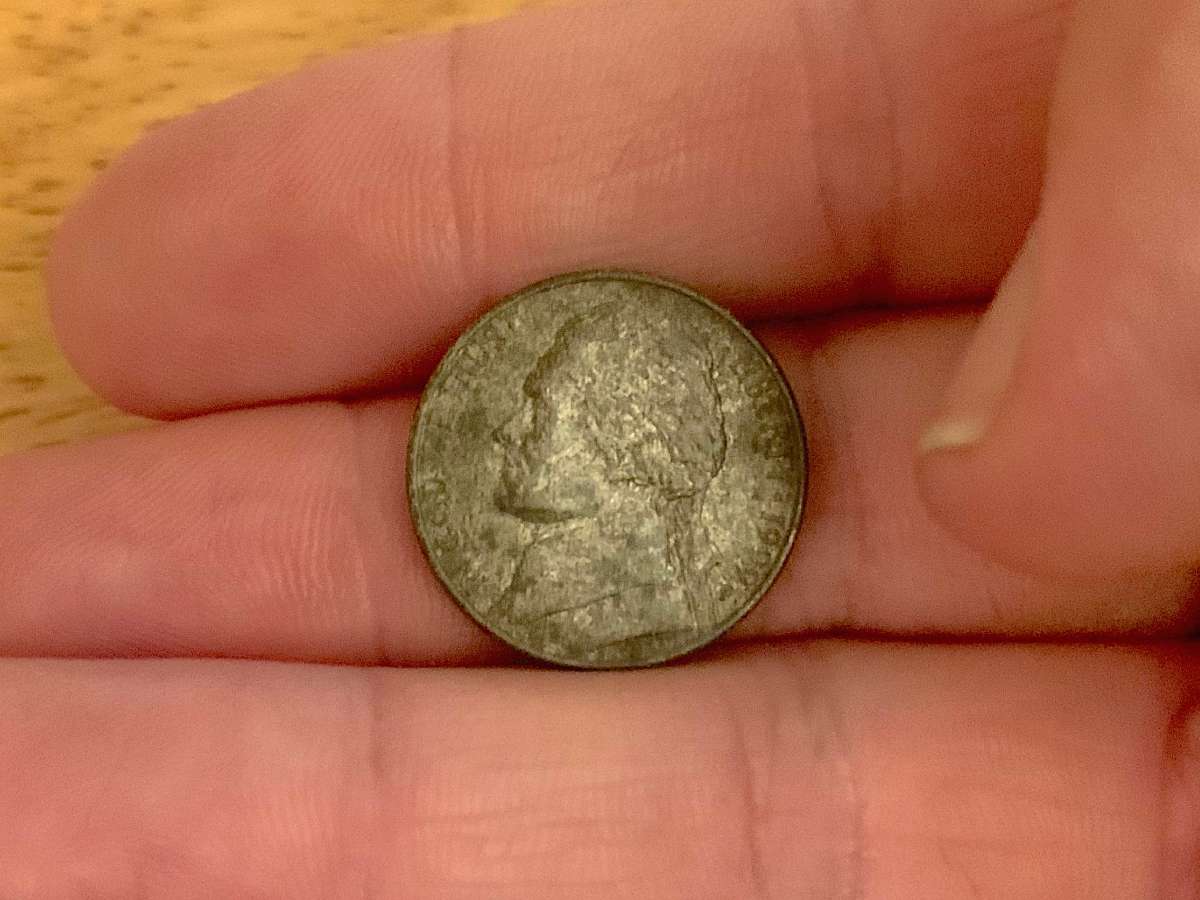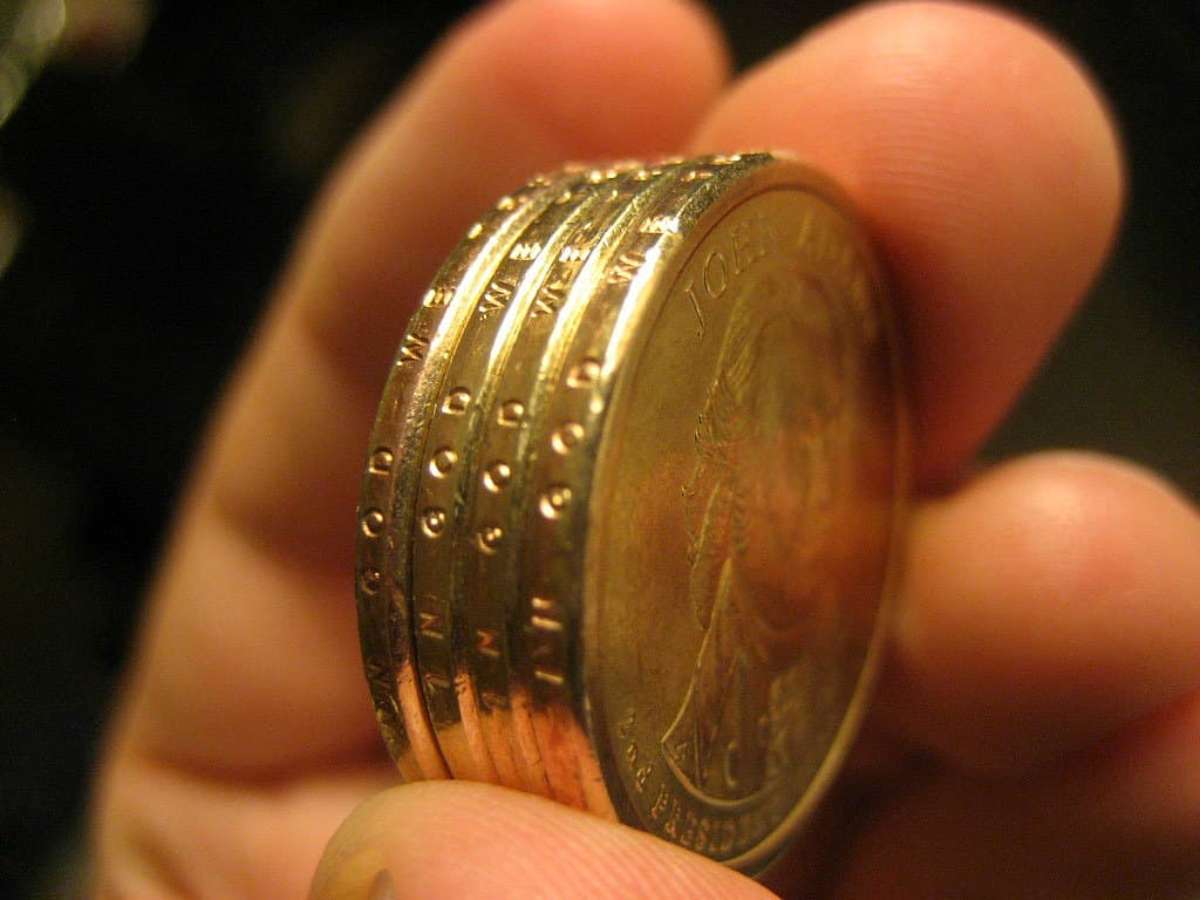I have some important advice before you buy gold coins.
Have you ever considered buying gold coins from a TV infomercial but thought the deal was iffy and didn’t follow through with the order?
Or… maybe you thought the deals looked good and you’ve bought many gold coins this way.
Buyer beware — some of the offers on gold coin commercials aren’t what they’re cracked up to be!
Granted, there are some good deals for those who wish to buy gold coins advertised on TV. But I’ve also seen a bunch of “deals” that should raise your suspicions.
I’m going to share with you what you should look for when buying gold coins from infomercials and how you can avoid the disappointment of getting scammed with fake gold coins, unfulfilled orders, or not receiving what you thought you were purchasing.
Gold Coin Infomercials Look Convincing
You’ve probably seen gold coin infomercials while watching daytime or late-night TV.
Triumphant symphony music plays as a deep-voiced announcer proclaims the special release of a beautiful, lustrous — and LARGE-looking — gold coin that flashes across the TV screen.
The narrator might say something about:
- The coin’s colorful history
- The coin being rare and one of only a few made
- The design being historic and that it was made a long time ago
- The coin being stolen, locked in a vault, or somehow disappearing for years — until now
Then there’s the gold price chart — you know, one that shows gold has increased by a 1000% (or something outrageous) since the year 2000. I bet you’ll see a bunch of green arrows pointing up and to the right side of your TV screen.
TIP: Always be wary of those climbing green arrows on the TV screen. They don’t tell the whole story!
Those graphs make the entire deal look pretty good, don’t they? I can just see people sitting in bed grabbing for their cell phones at 3 AM and dialing the number on the screen.
Oh, for the love of God — Stop… don’t do it! (This is where I hope you’re hearing squealing brakes in your colorful imagination.)
When the price of real gold coins is in the hundreds and even thousands of dollars apiece, do you really think you’re buying an historic, rare, solid-gold coin for $9.95? Or $19.95? Or even $49.95? Oye veh.
Next, I’m going to tell you what you’re really buying if you’re checking out that “24-karat gold coin” you saw on TV being advertised for $20.
Watch Out For Fake Gold Coins
I’m not going to say that all gold coins you see advertised on TV are fake. They’re definitely not all fake gold coins. But you need to be careful — especially when you buy gold coins for cheap prices — because all that glitters truly isn’t gold.
Those cheap gold coins that sell for $10 or $20 — those aren’t really solid gold. Yes, they contain gold. But they’re not solid, 100% pure gold through and through. In most cases, they’re gold-plated coins.
“But they say the coin is pure 24-karat gold…“
Yes, the coin might have 24-karat gold plating, but did you hear how the advertiser described the coin? The fake gold coins are often described as:
- Clad
- Gold clad
- Pure gold clad
- 24-karat gold clad
- 24-karat gold layered
- Tribute coins
- Tribute copies
- Tribute proofs
- Re-creations
- Non-monetary mintings
- Private mintings
- Masterpieces
All of those phrases have been used on gold coin commercials to describe gold-plated replica coins.
In other words, they aren’t really even coins. They’re gold-plated tokens, medals, or rounds — not legal tender money. And they certainly are not solid gold coins!
Do you know how much the gold plating on those “gold coins” is really worth?
Many of these gold-plated copy coins contain between 30 and 50 milligrams of gold. When the price of gold is $1,400 per ounce, these coins contain somewhere between $1.50 and $3 worth of gold — at best.
That $19.95 gold coin you saw on TV doesn’t seem like such a good deal anymore, does it?
At the end of the day, there’s nothing really wrong with buying gold-plated tokens, medals, or rounds. Unless, of course, you thought you were buying a rare, limited-edition United States coin made from solid, 24-karat gold. Then there’s a problem!
Which Gold Coins Are Safe To Buy?
Many gold coin infomercials hawk gold-plated non-monetized, private-minted replica coins.
But I’ve also seen advertisements for legitimate gold coins — actual, solid gold coins — that are the real deal.
Here are 5 of the most popular types of real gold coins that you’ll probably find advertised on infomercials:
- American Gold Eagles
- Pre-1933 United States gold coins
- Canadian Maple Leafs
- Chinese Gold Pandas
- South African Krugerrands
As long as you’re buying legitimate versions of these coins, you’ll be okay.
Of course, you’ve got to know whether or not you’re buying real gold coins and whether or not you’re getting them for a fair price, too. I’ll discuss that next.
6 Ways To Avoid Gold Coin Scams
You can protect yourself when buying gold coins and avoid getting scammed by double-checking a coin business before you buy gold coins. Here’s how:
#1 – Verify that the gold coin business actually exists.
Most businesses have to register with local authorities. You can find this information by searching the company name online and doing a little digging.
#2 – Check with the Better Business Bureau.
The Better Business Bureau tracks business operations and handles reports of scams and other problems. Make sure the company that you’re considering buying gold coins from has had no complaints lodged against them. Or, if there have been problems reported, make sure that they were resolved satisfactorily.
#3 – Search online for scams connected to the business.
Here’s a really simple way to check for problems. Simply run this search on Google: “[name of business] scams.” Easy-peasy. See what comes back. Look for signs that other people have reported problems when dealing with this business.
#4 – See if the business is listed with a reputable organization.
There are several coin industry organizations that are working to protect consumers from losing their money to coin scams. These organizations include:
- American Numismatic Association
- Industry Council for Tangible Assets
- Professional Numismatists Guild
- Numismatic Consumer Alliance
#5 – Make sure the company has a return policy.
Don’t like what you’ve bought? Most reputable businesses have a return policy — so you can send your coins back to the company and get your money refunded. If this company offers no return policy, I’d urge you to think twice before spending your money there.
#6 – Ensure that you’re getting a good deal.
Gold coin prices are always changing, and there isn’t a singular price for any or all gold coins. To know how much is fair when you buy gold coins, you must do your research. Don’t skimp on the efforts, and make sure that you’re checking a variety of resources for gold coin prices and bullion values.
And, don’t forget the old adage: If a deal looks too good to be true, it probably is. Make sure you’ve done some research before you buy gold coins — so you’ll be sure that you’re really getting a good deal!
More Info On Buying Gold Coins
In addition to the links I’ve included above, here are some other resources to help you buy gold coins with confidence:
- Gold Buffalo Tribute Coin Is A Scam
- Gold Prices Are Up & So Are The Gold Commercials
- Shop-At-Home Coins: Are They Worth It?
- 5 Things You Should Know About Gold Coin Informercials






